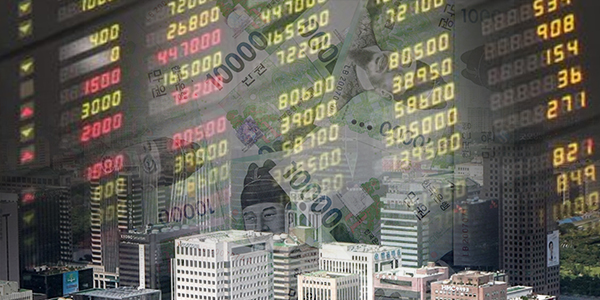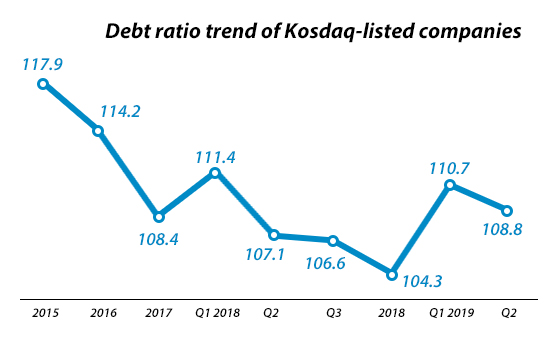
이 누리집은 대한민국 공식 전자정부 누리집입니다.

Biz News Korea(Eng)
- Collected
- 2019.08.26
- Distributed
- 2019.08.27
- Source
- Go Direct

The debt ratio of South Korea’s listed companies has increased in the first half in line with worsening performance and financial distress due to the protracted economic slowdown.
As of late June, the debt ratio of 636 companies on the main Kospi averaged at 108.75 percent, up 4.44 percentage points from late December, according to data from the Korea Exchange and the Korea Listed Companies Association on Monday.
Debt ratio is defined as the ratio of total liabilities to total assets and is a measure of a company’s leverage or financial stability.
Total debt jumped 7.27 percent to 1,355 trillion won ($1.11 trillion) while assets rose 2.90 percent to 1,246 trillion won over the cited period.
The debt ratio had come down from 111.4 percent in the first quarter of 2018 to 104.3 percent by December. But the ratio went up to 110 percent in the first three months of this year.
The debt ratio for the non-manufacturing sector added 12.1 percentage points to 152.6 percent over the past six months. The manufacturing sector saw its ratio rise 1.5 percentage points to 92.2 percent.

Companies with assets greater than debt numbered 344, or 54.1 percent of the total. Some 182 companies, or 28.6 percent, had a debt ratio of between 100 percent and 200 percent. The number of those with a ratio exceeding 200 percent rose by 22 to 110, accounting for 17.3 percent.
The debt ratio climbed for 27 sectors, such as education services, real estate, transportation storage and grocery. Only 10 saw their debt ratio fall, including those from science technology services, electronic components and computers, construction and mining.
Debt accumulated among companies trading on the junior Kosdaq as well. The debt ratio of 909 Kosdaq-listed companies in the first half was 111.94 percent. The figure has been rising steadily, from 98.54 percent in 2017 to 101.89 in the first half of 2018 and 102.49 in late 2018.
By Moon Il-ho and Kim Hyo-jin
[ⓒ Pulse by Maeil Business News Korea & mk.co.kr, All rights reserved]









